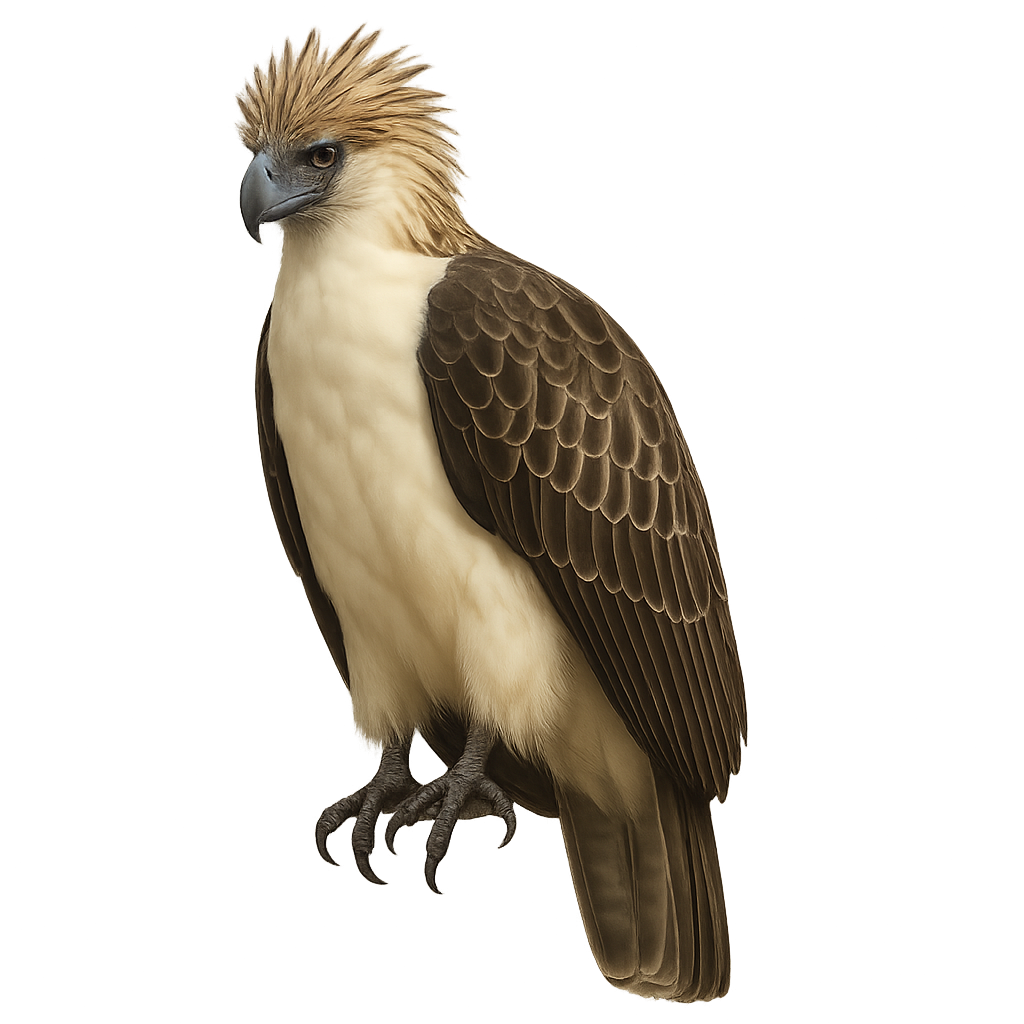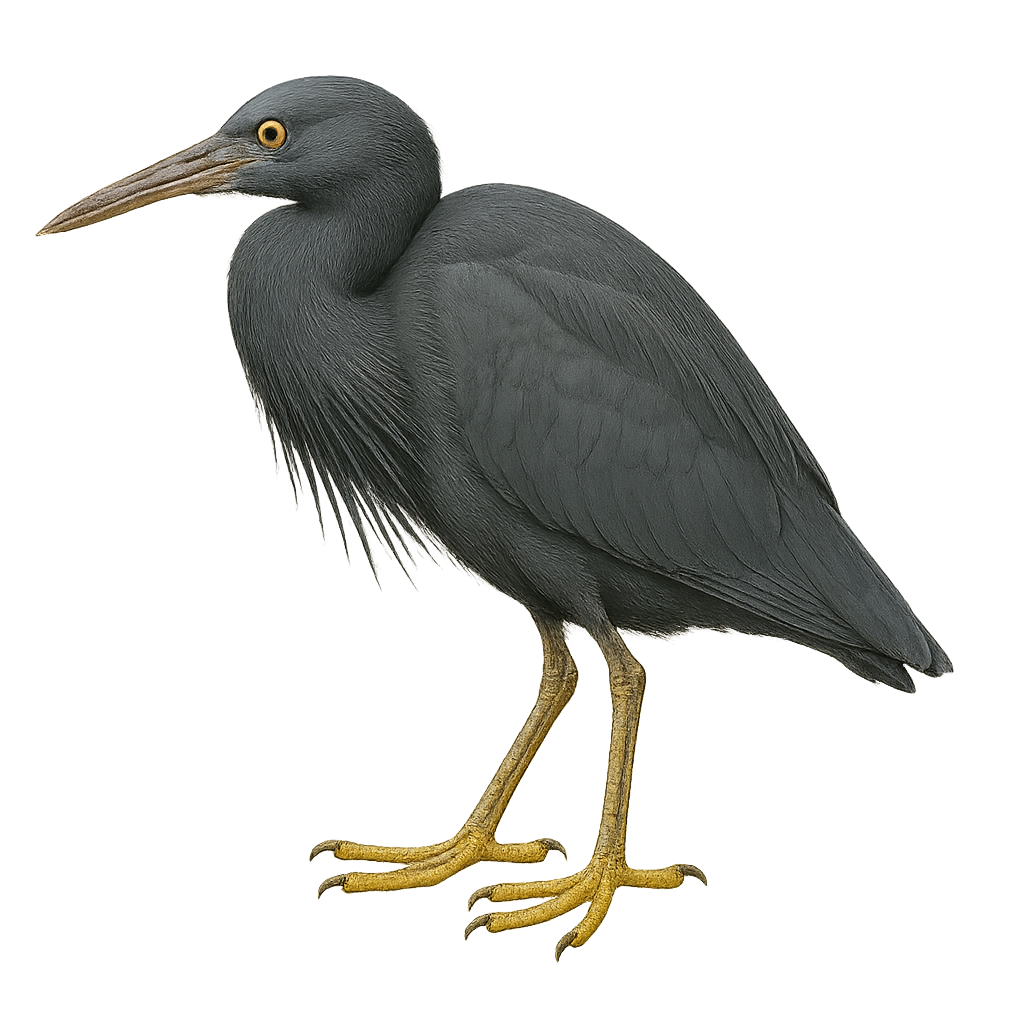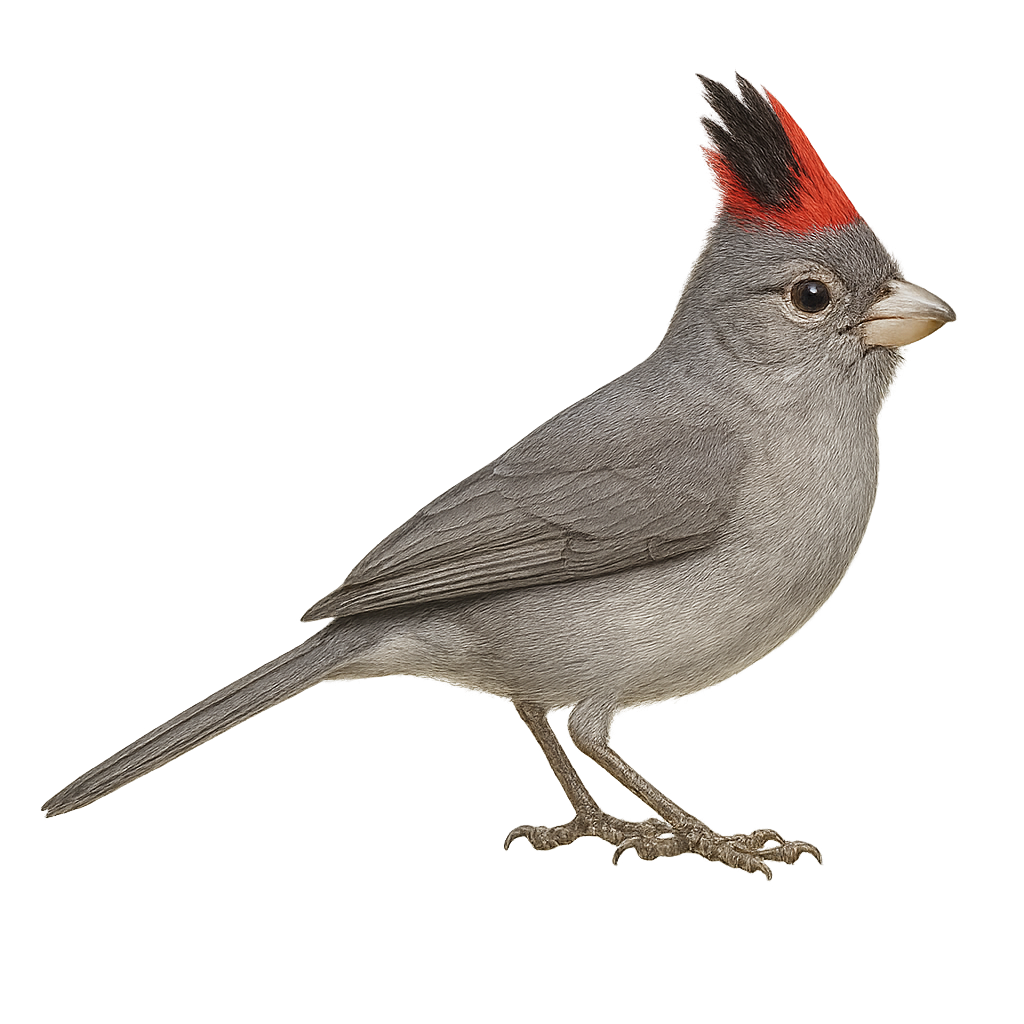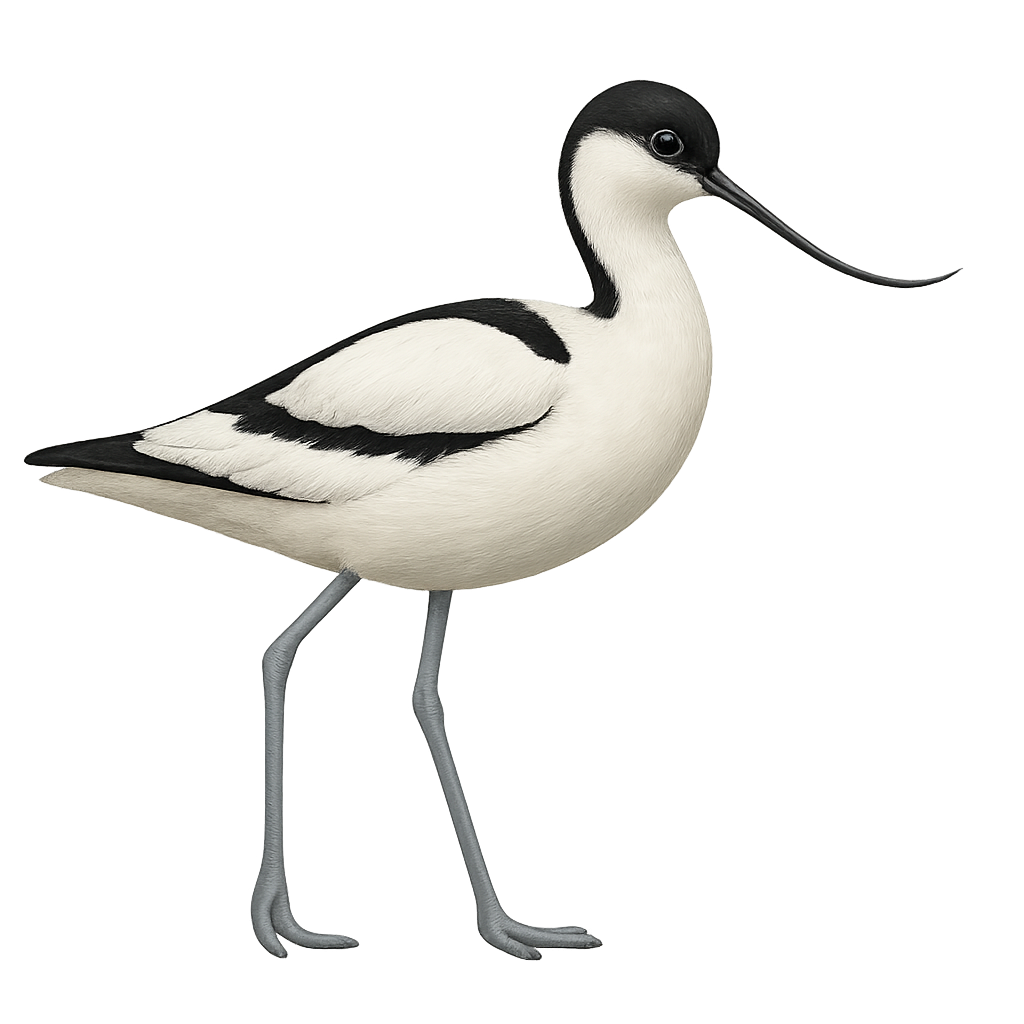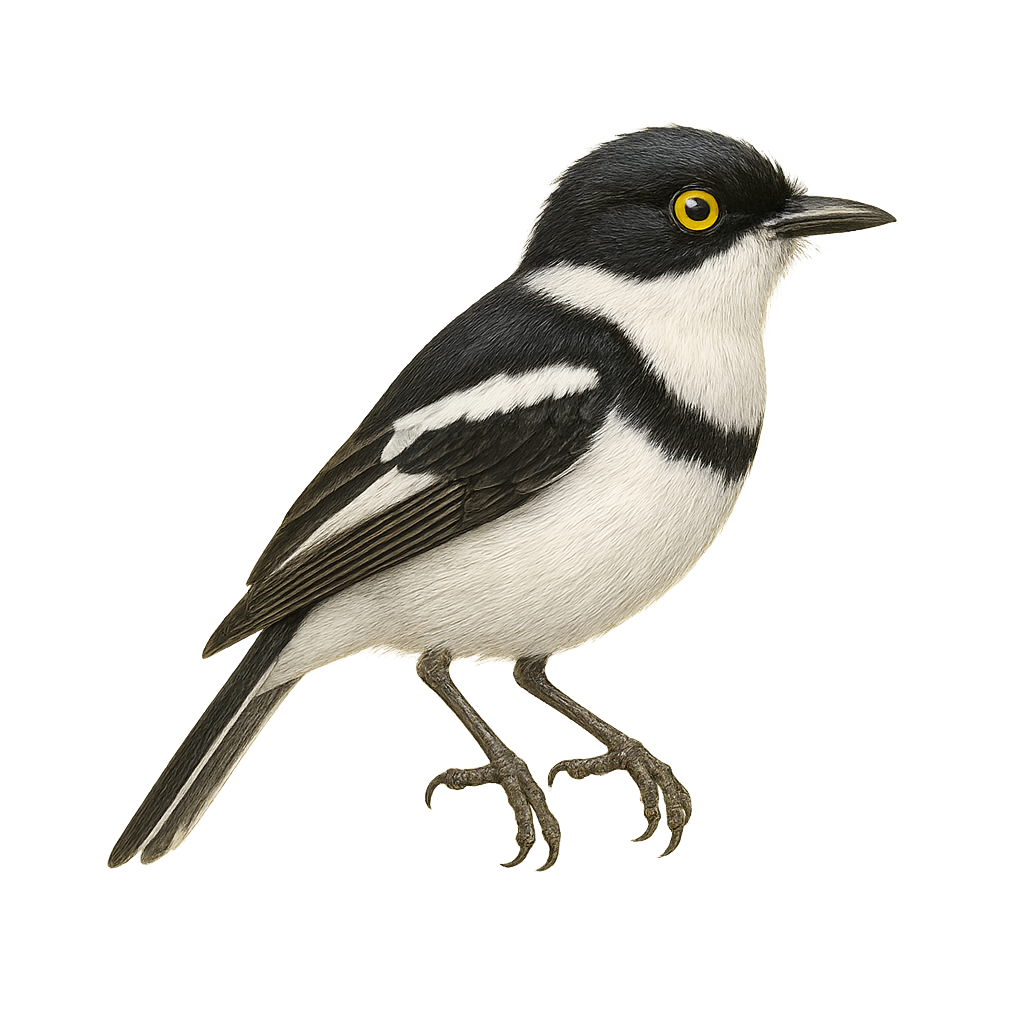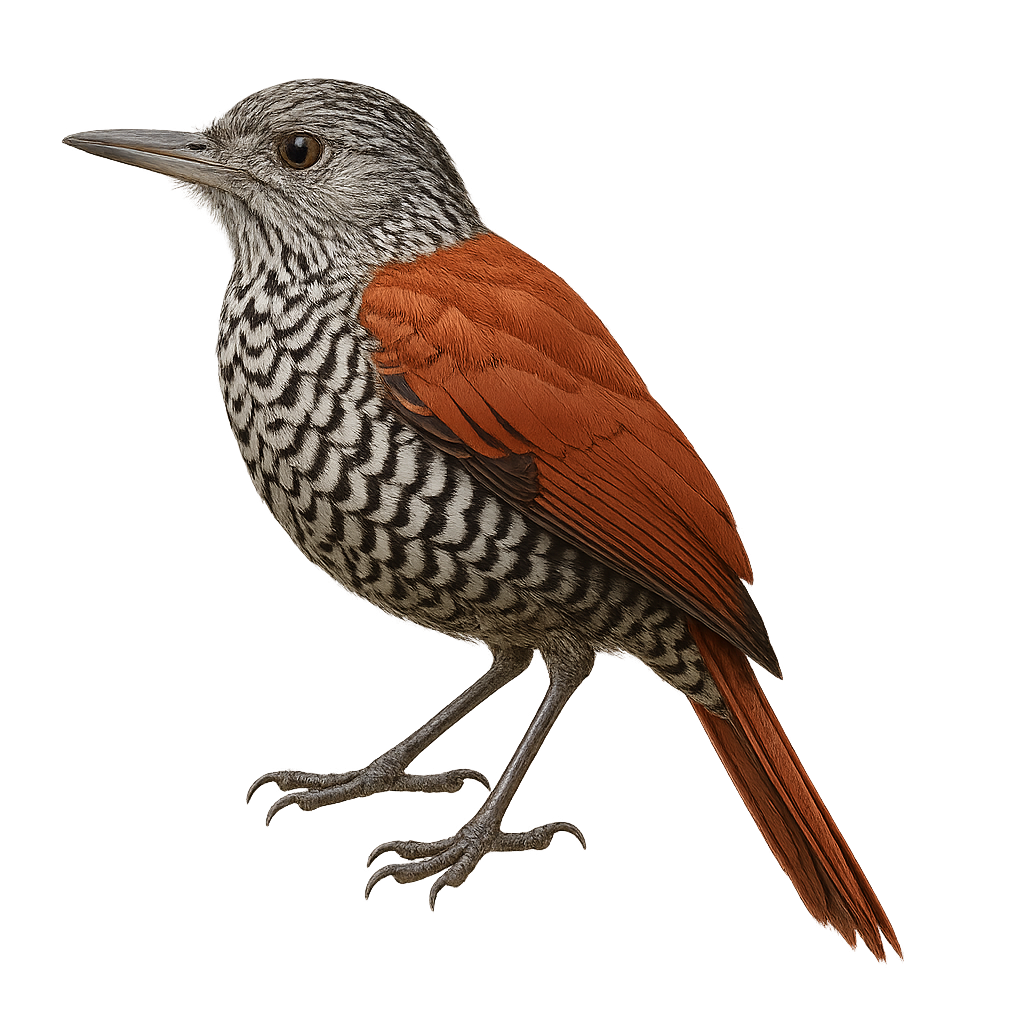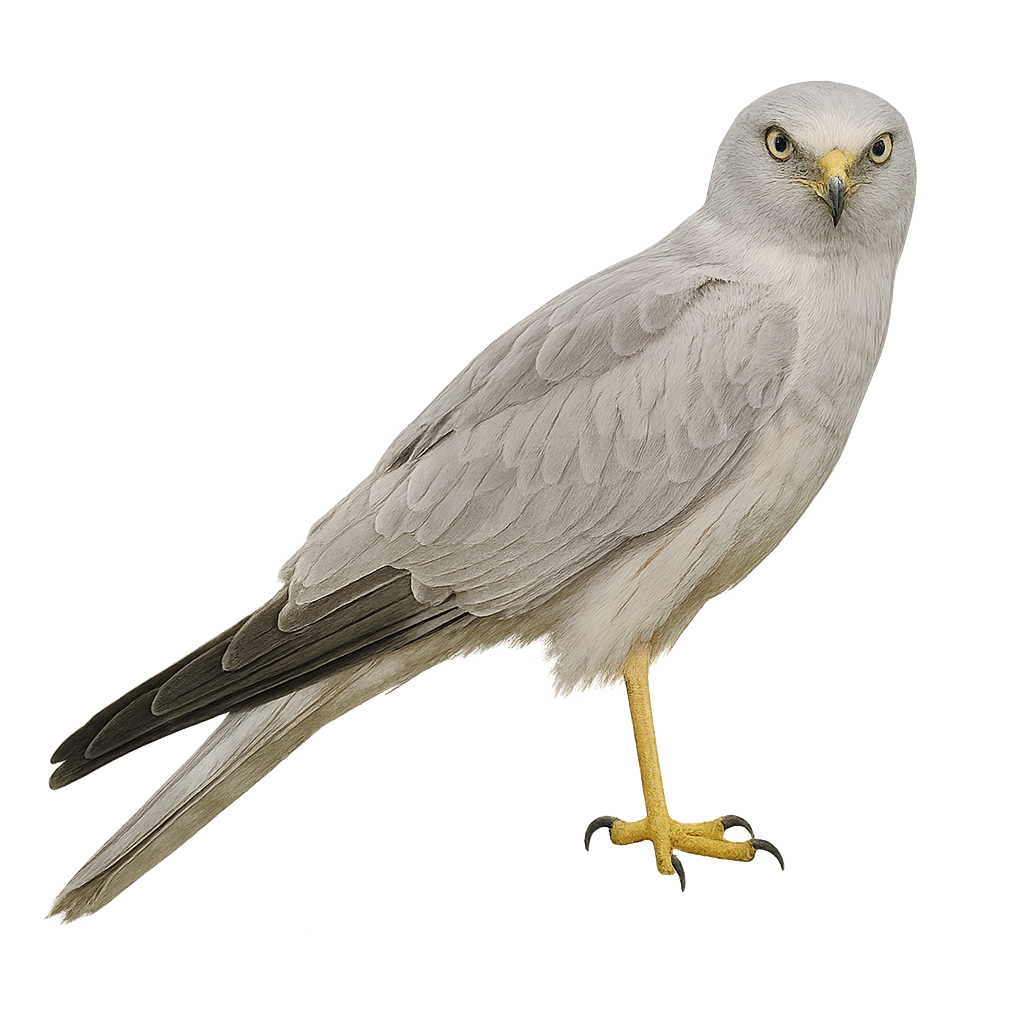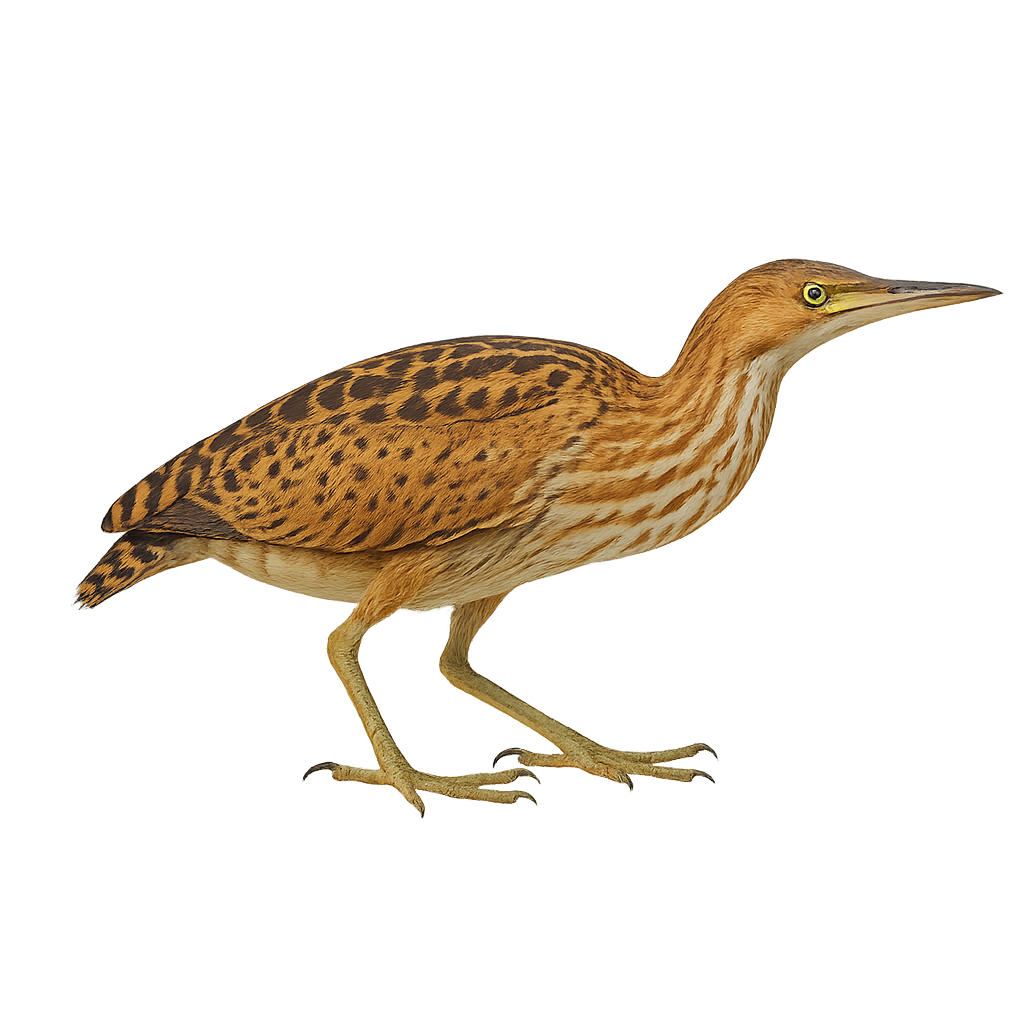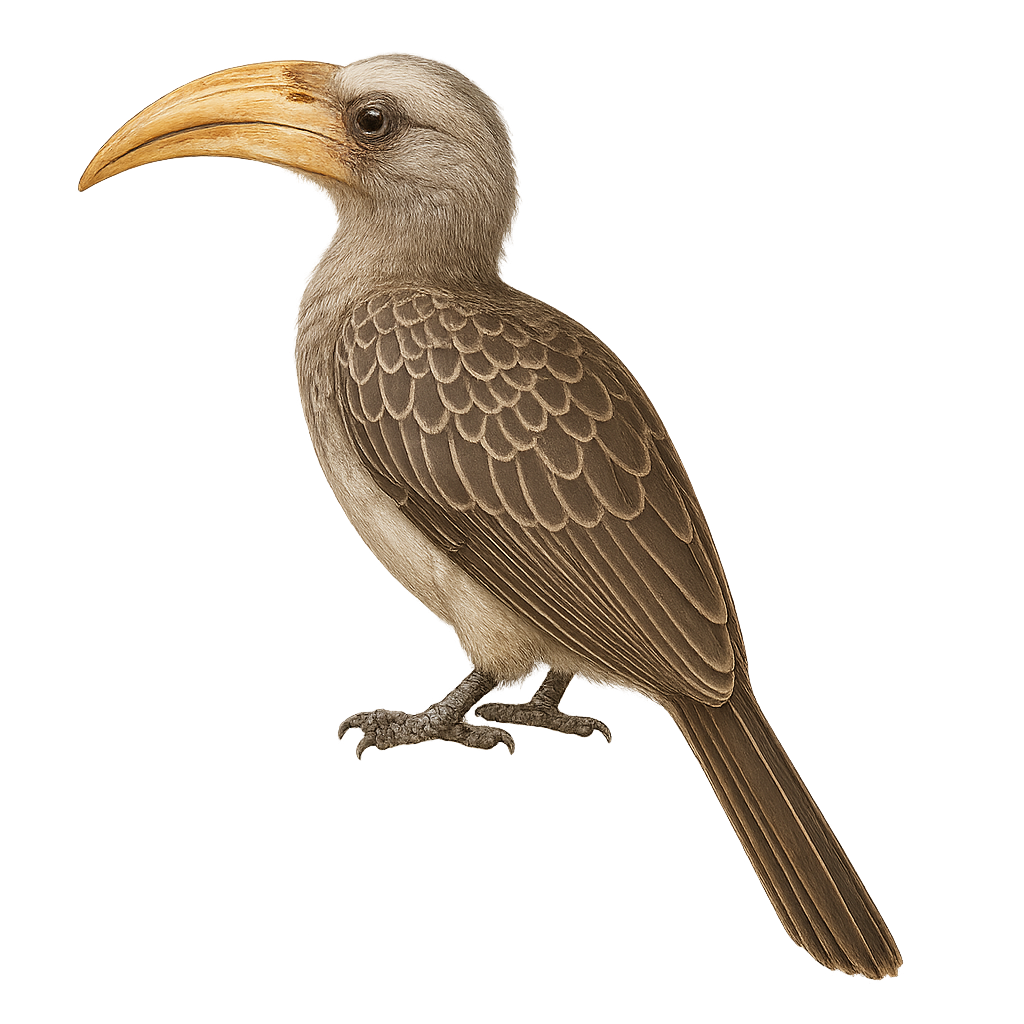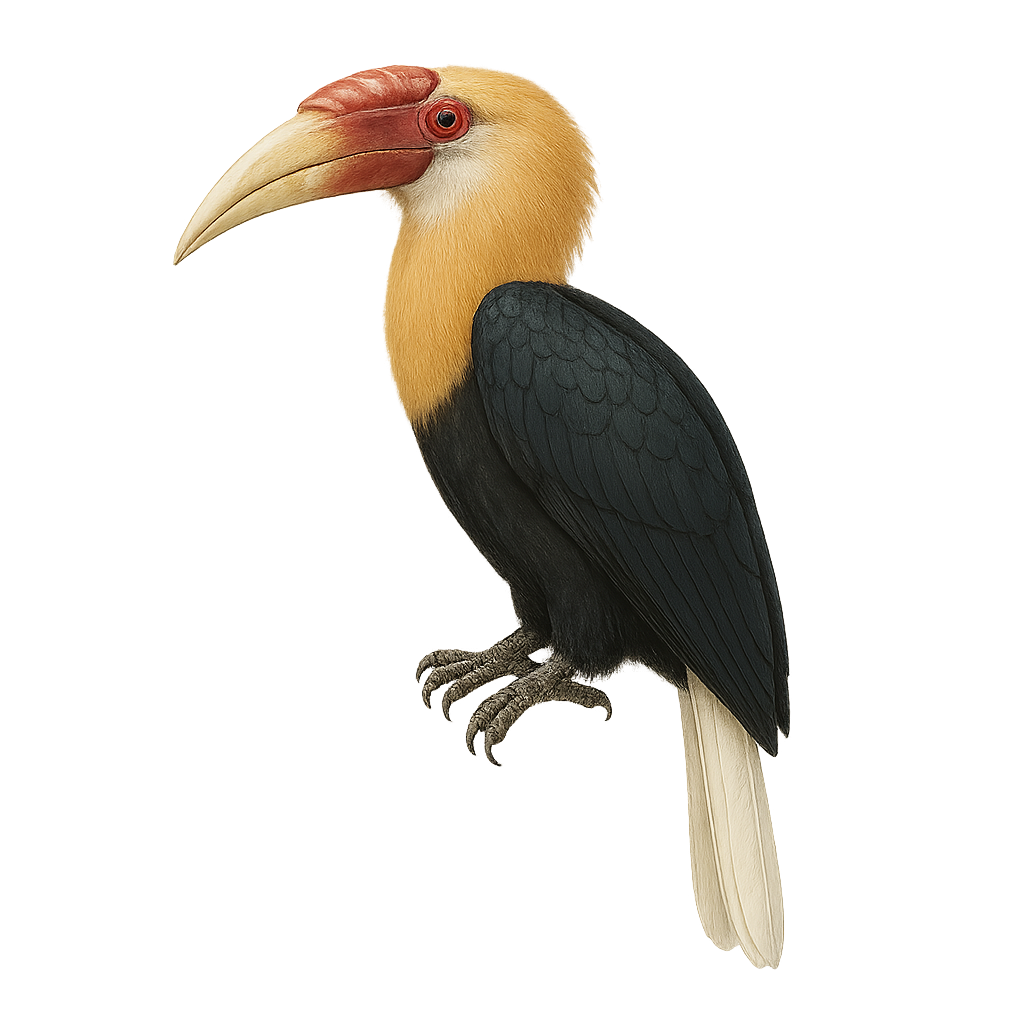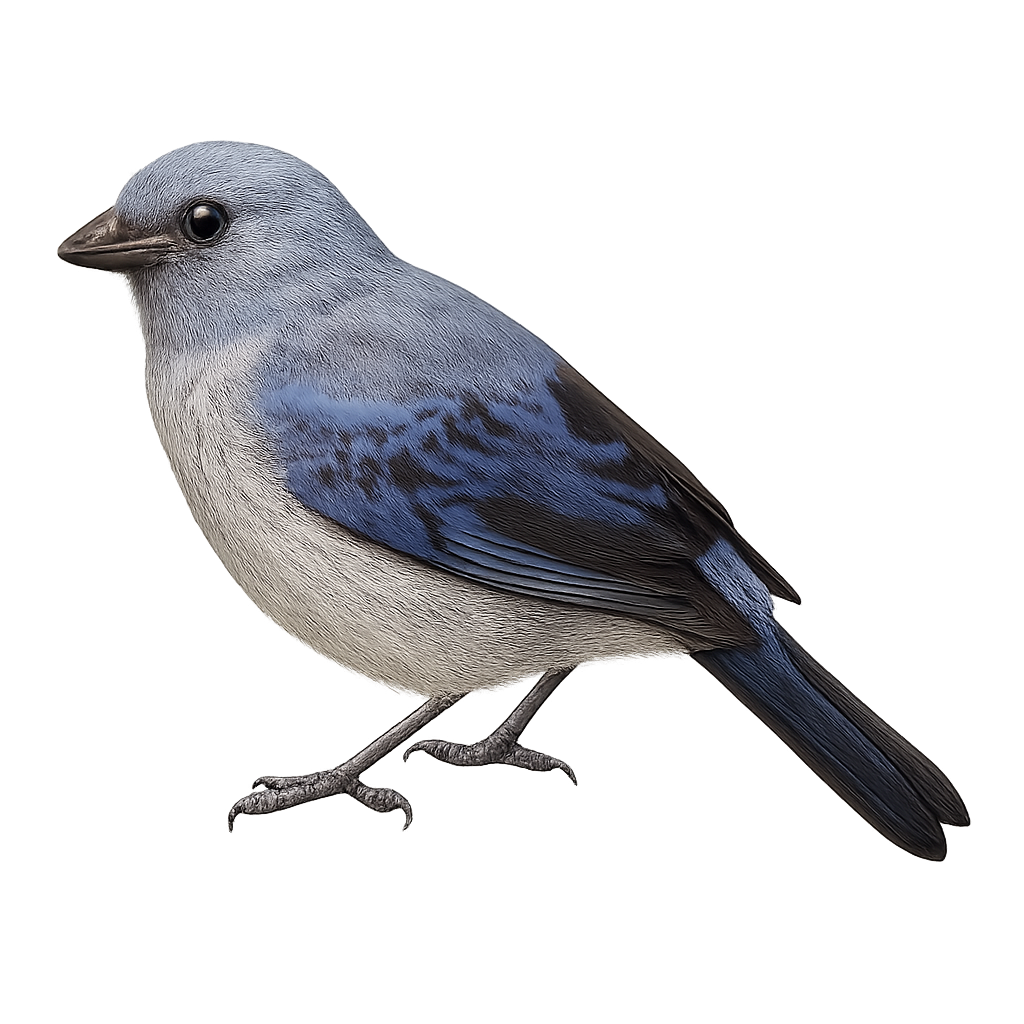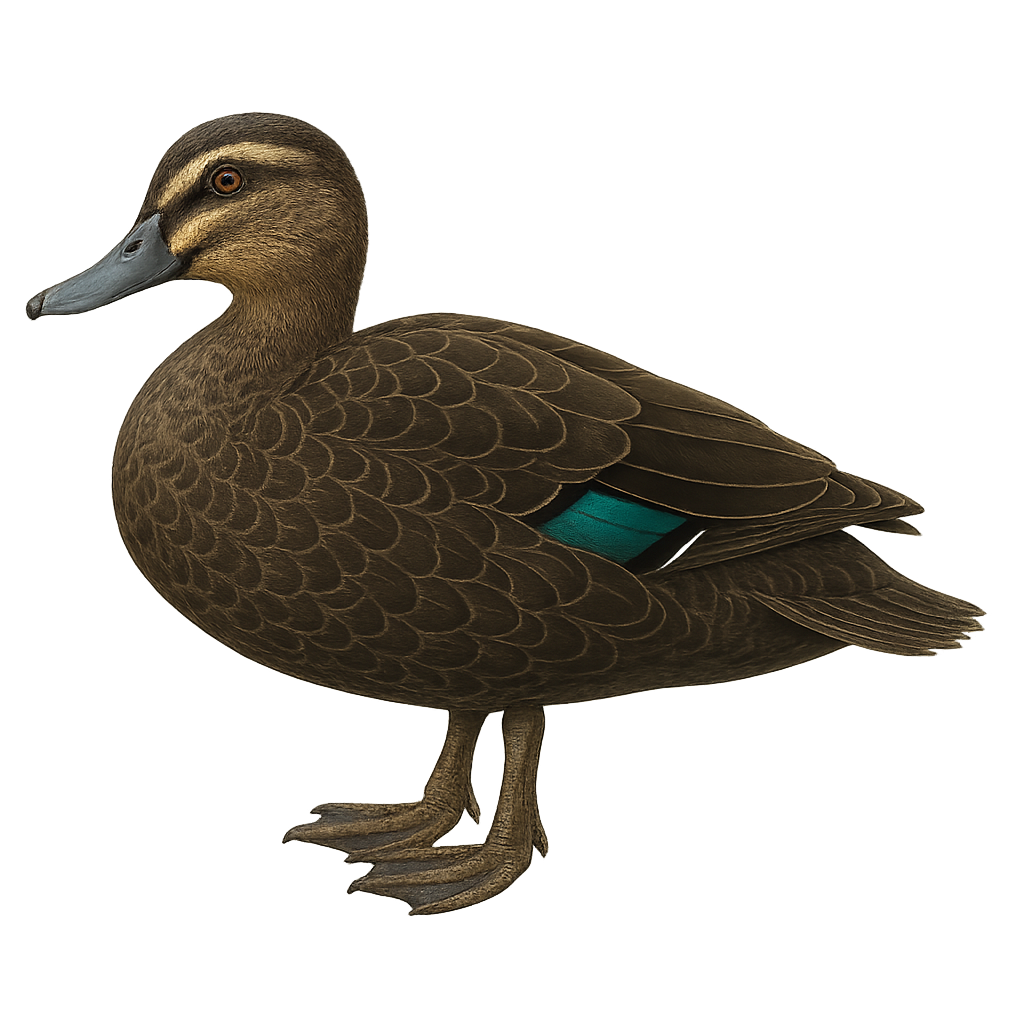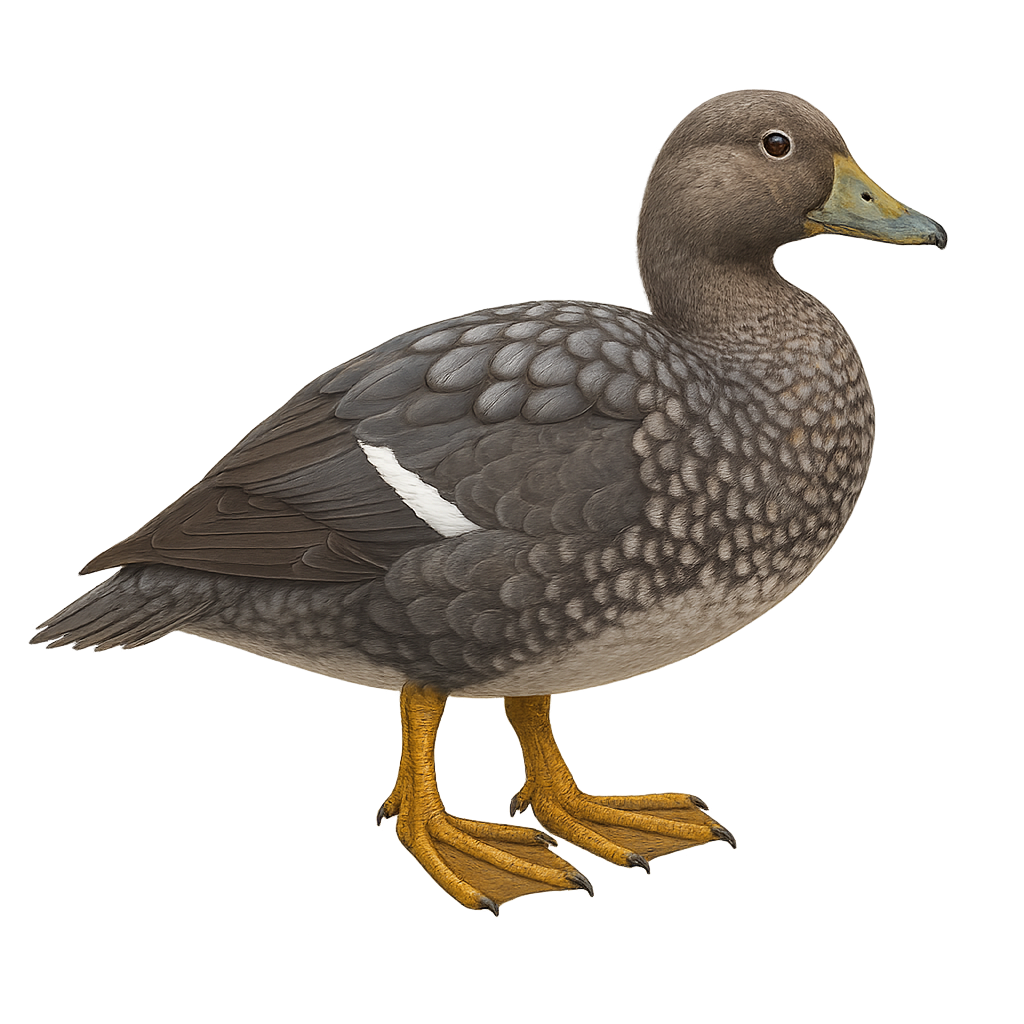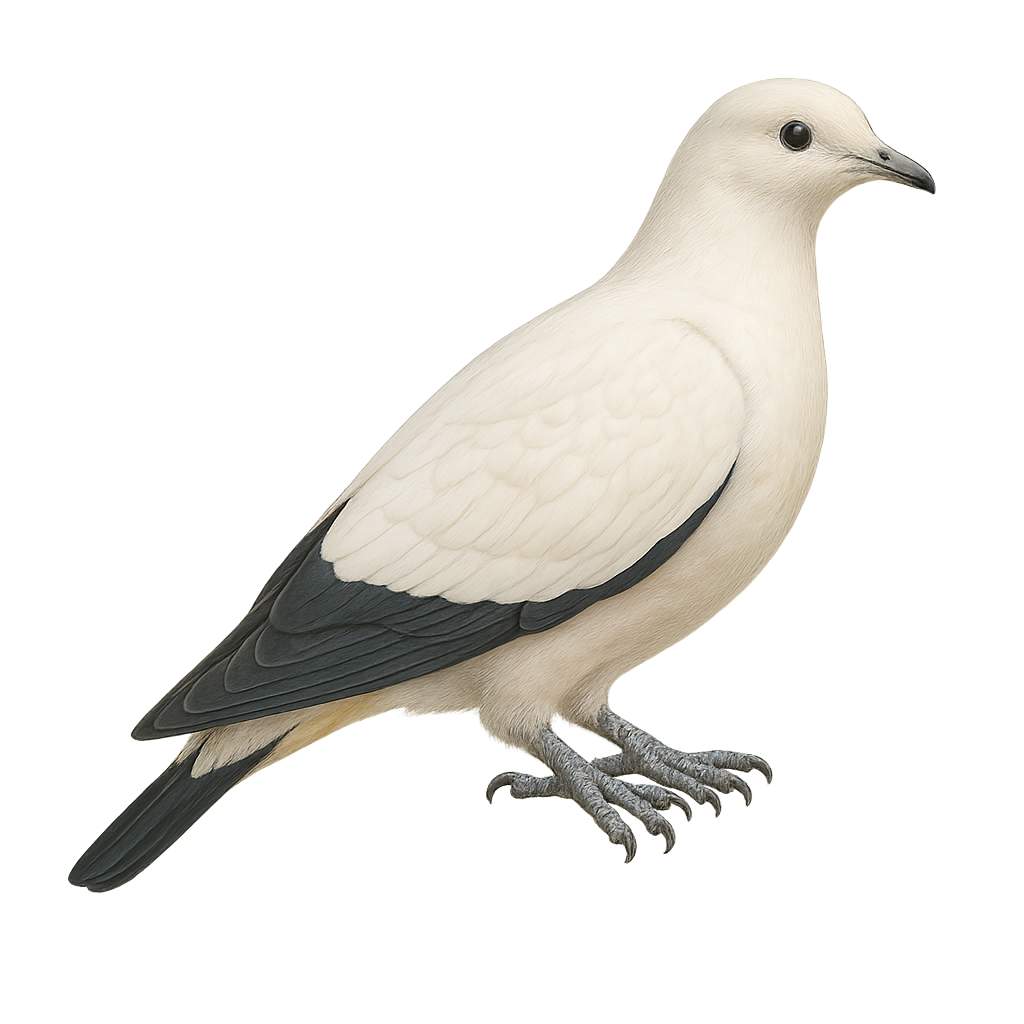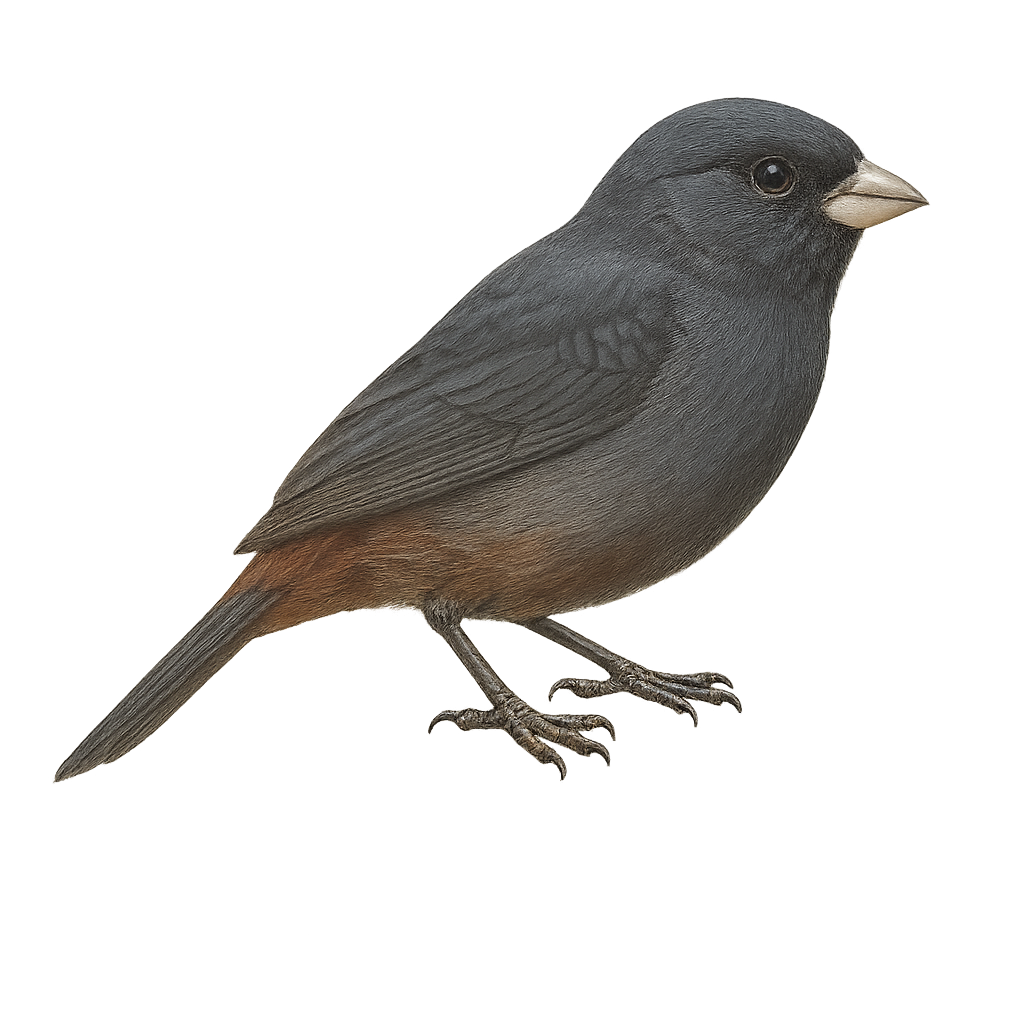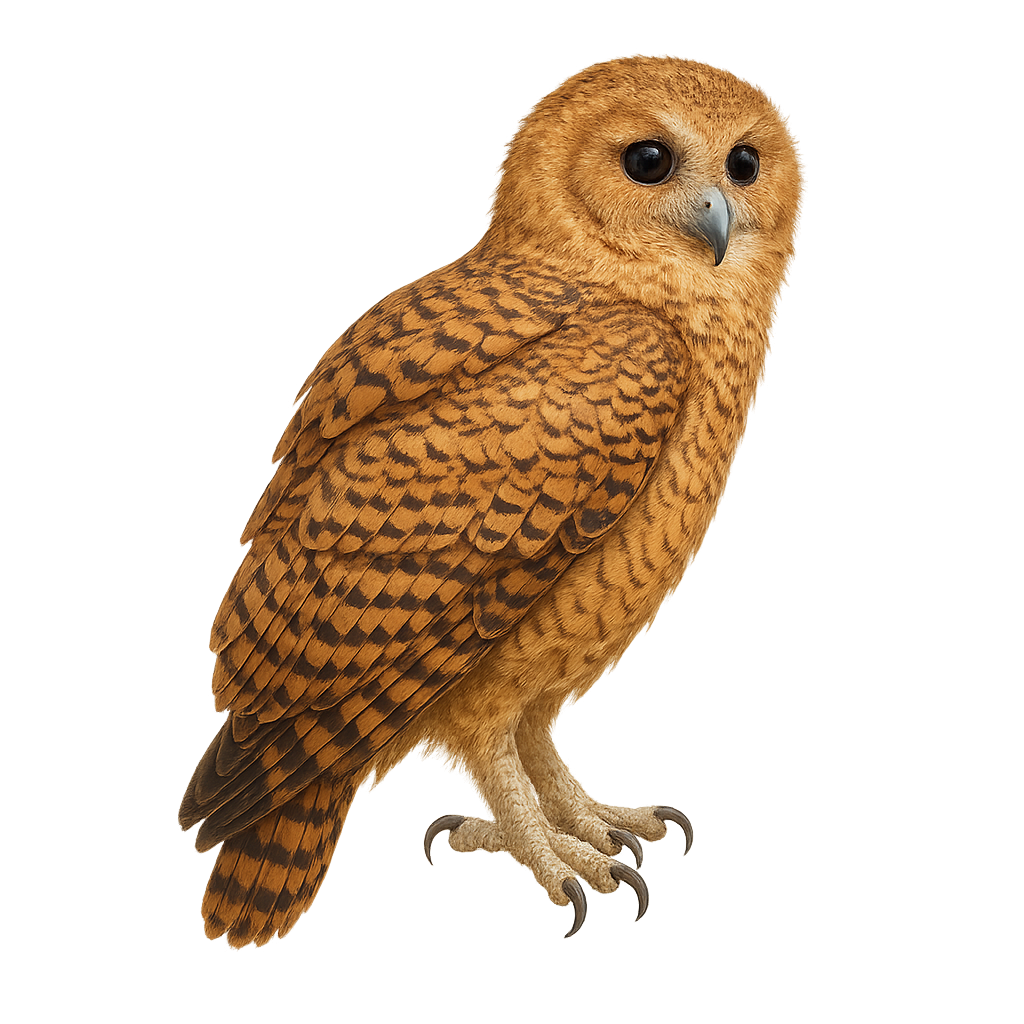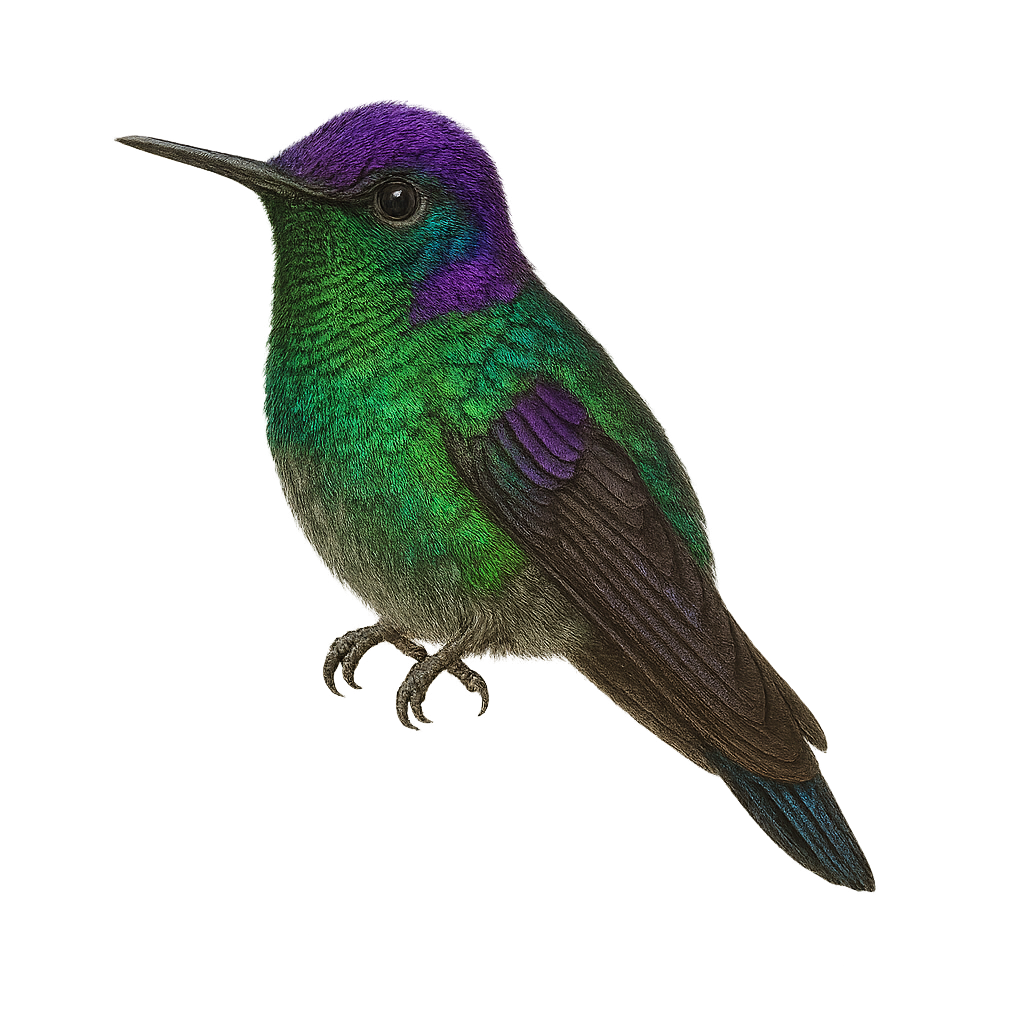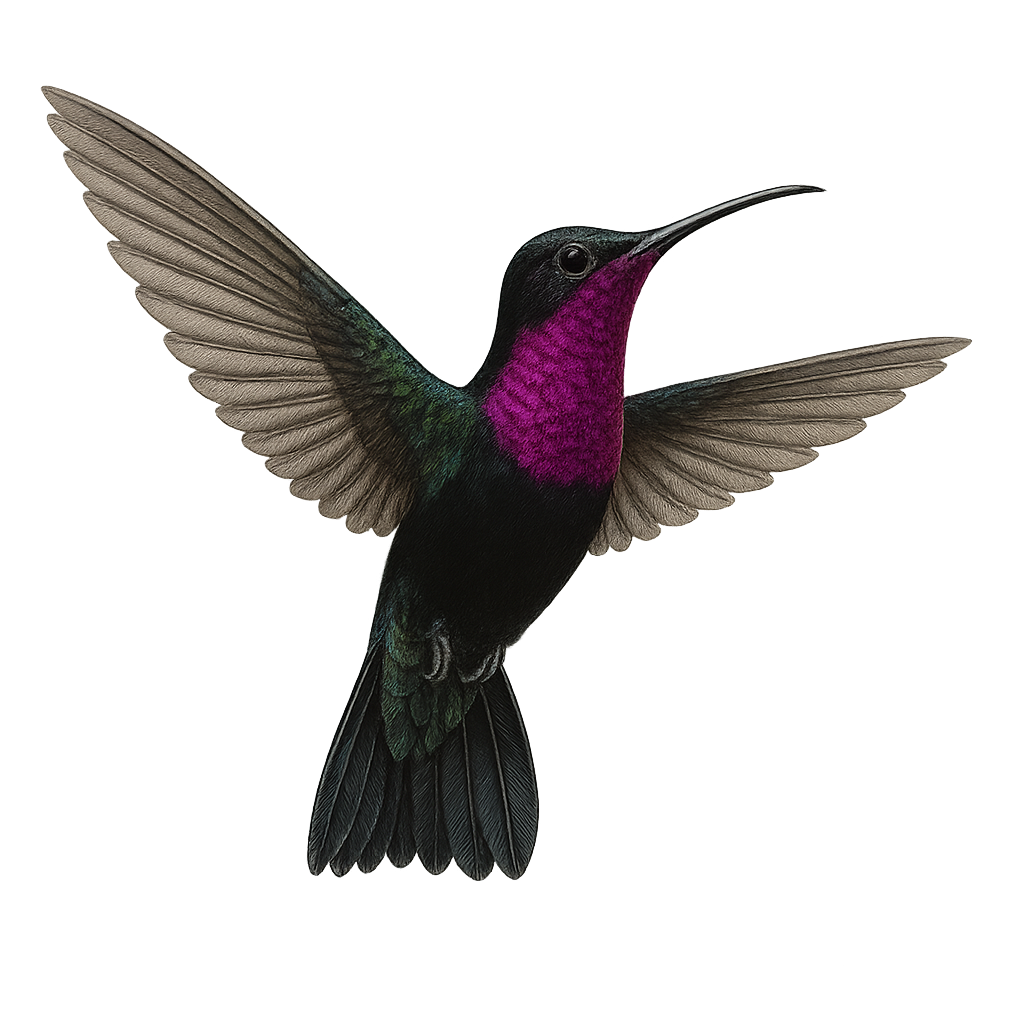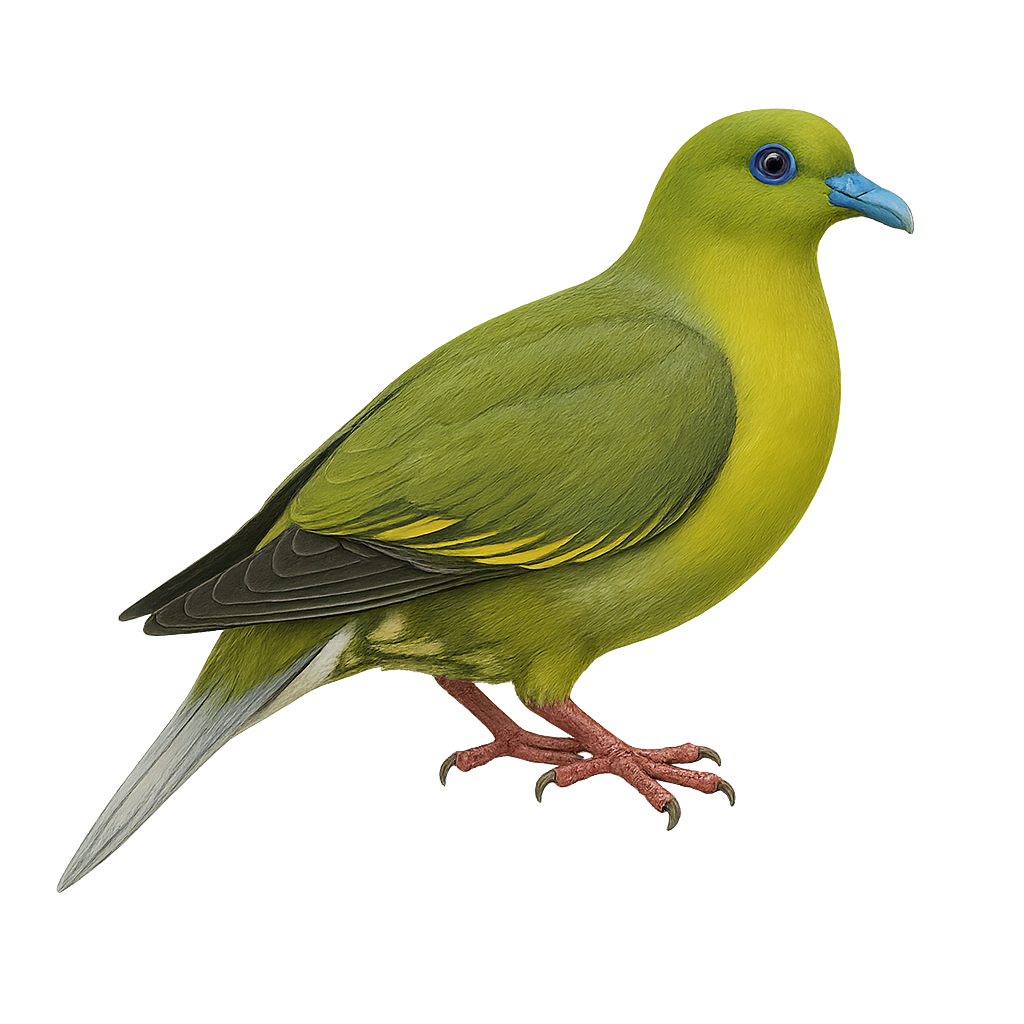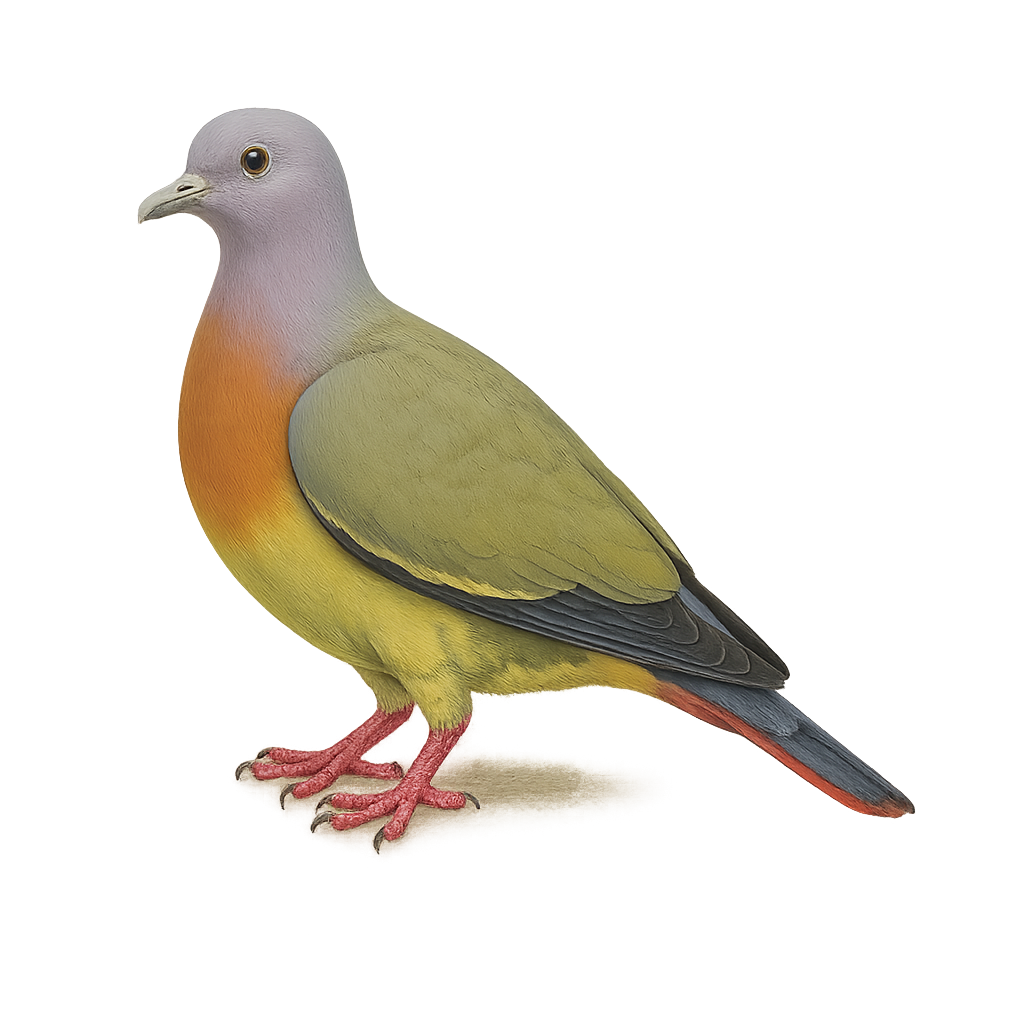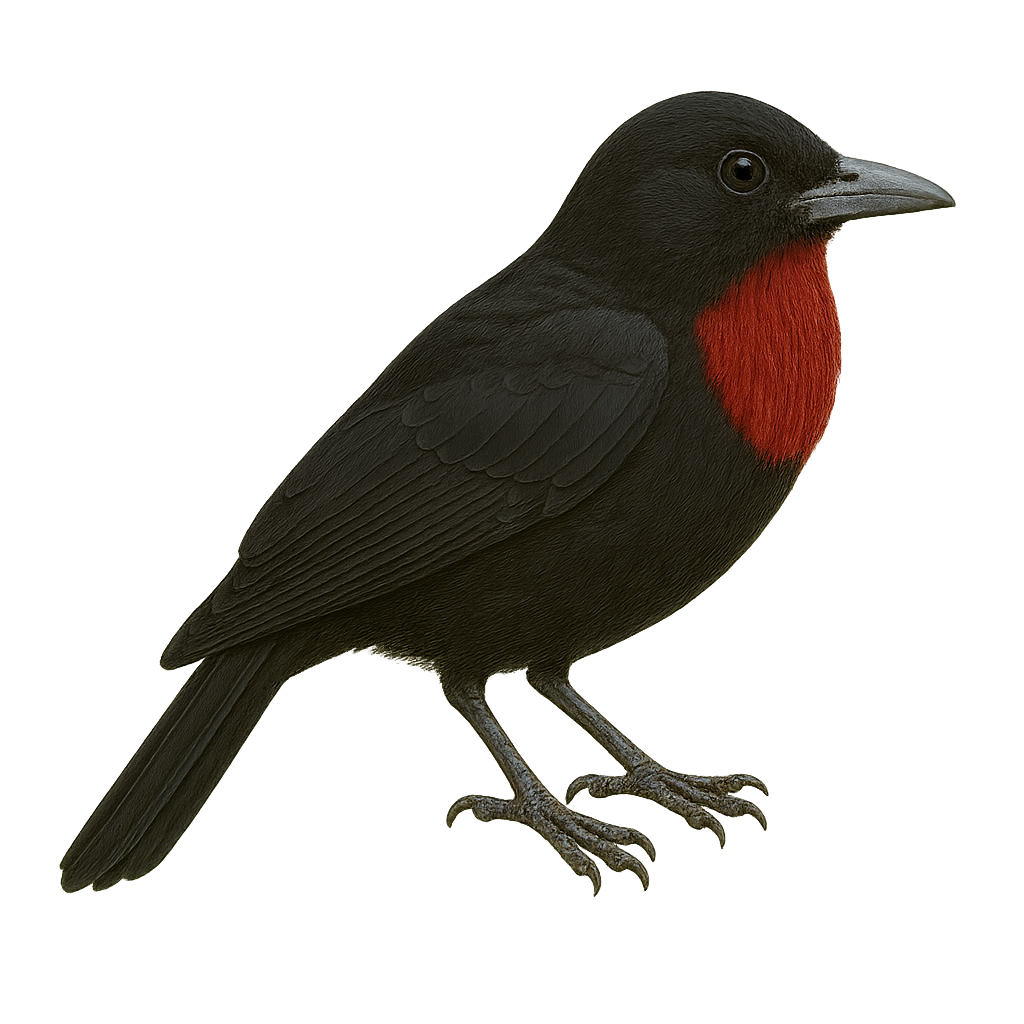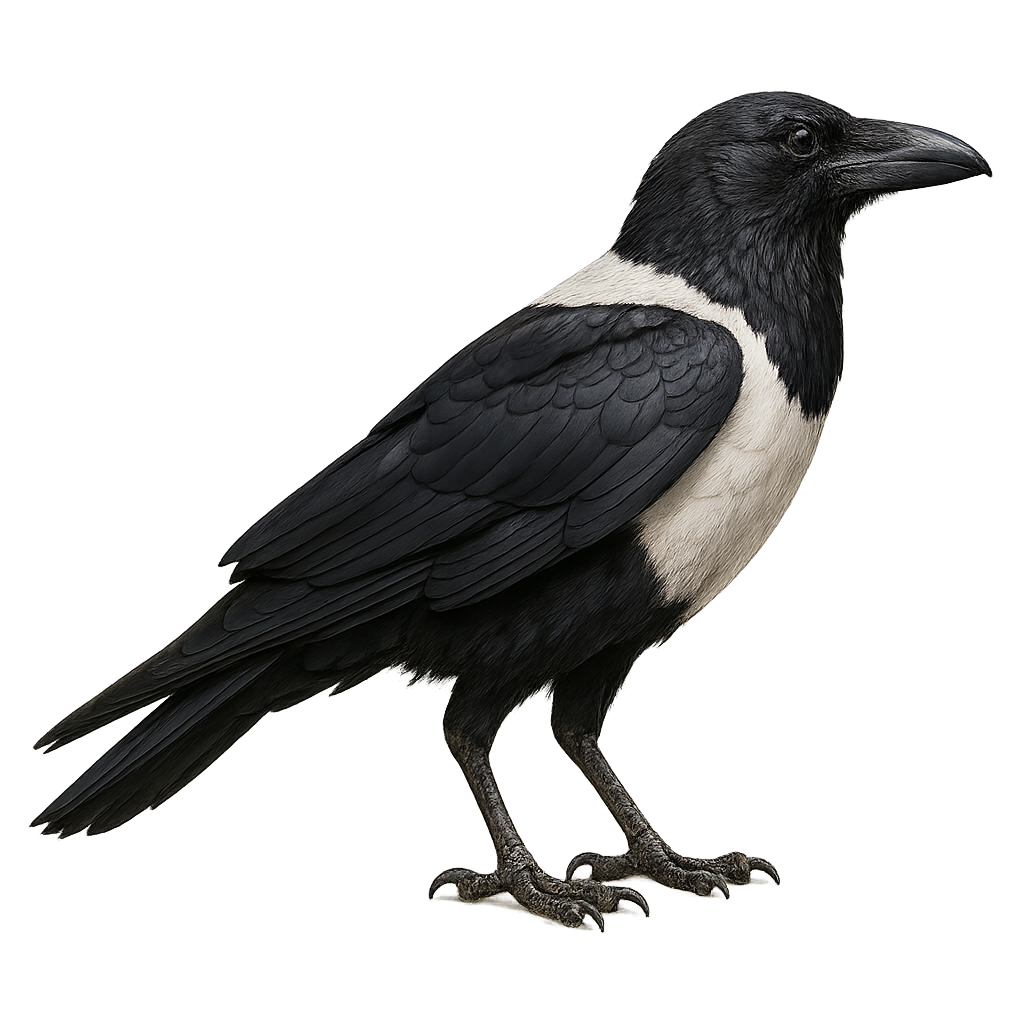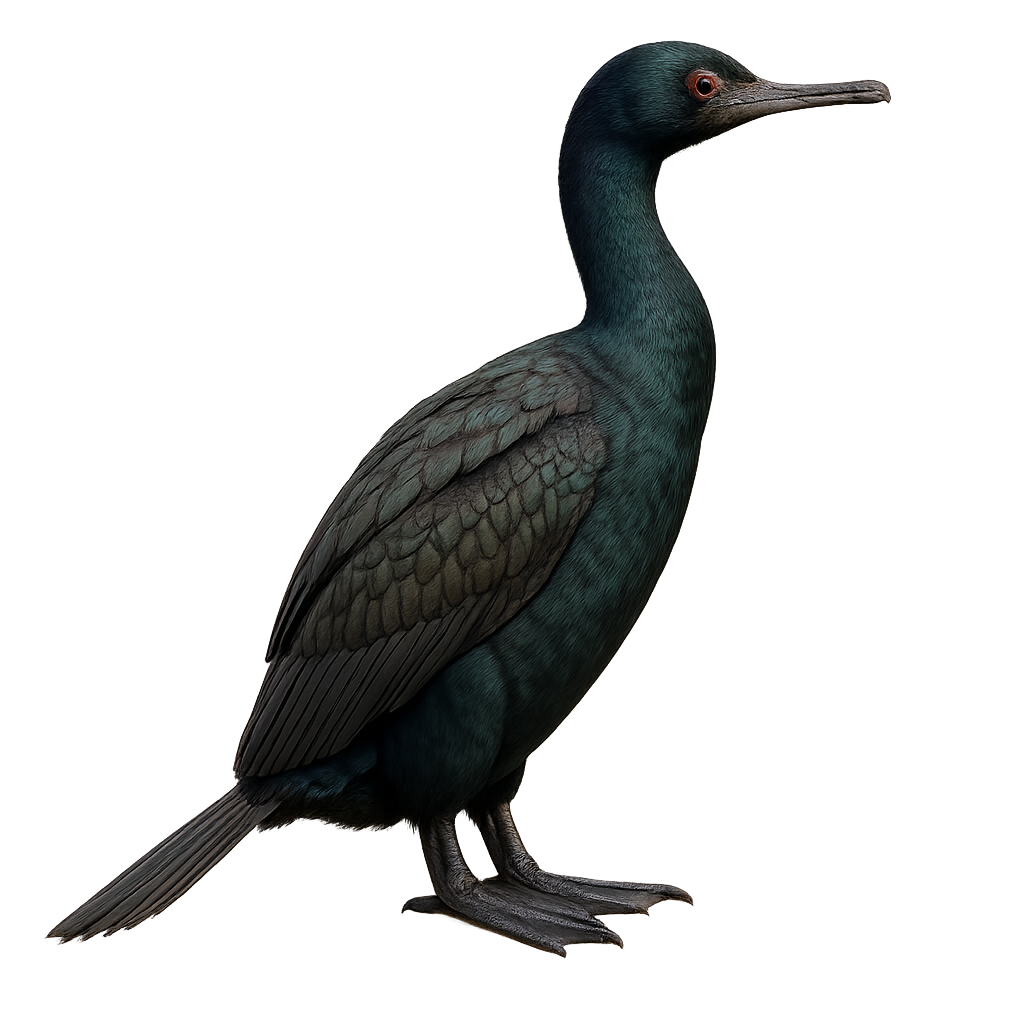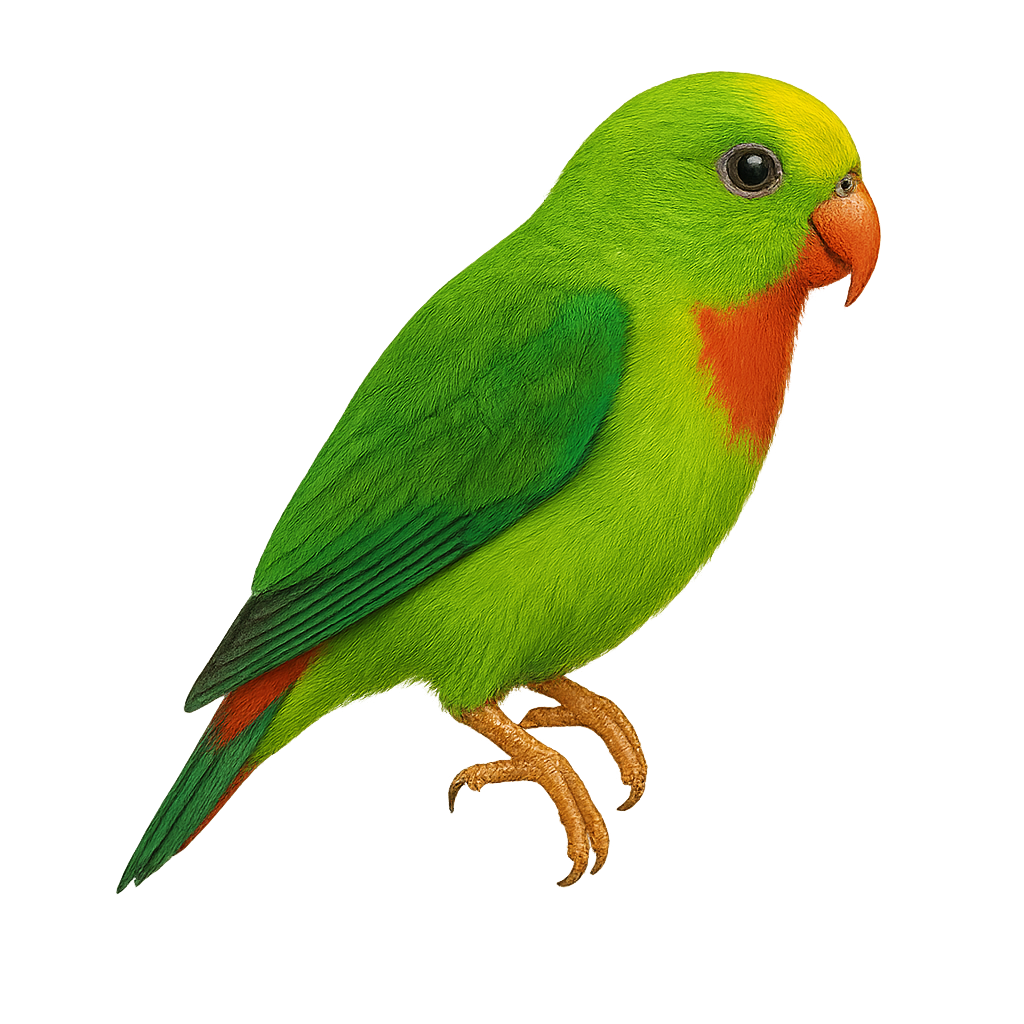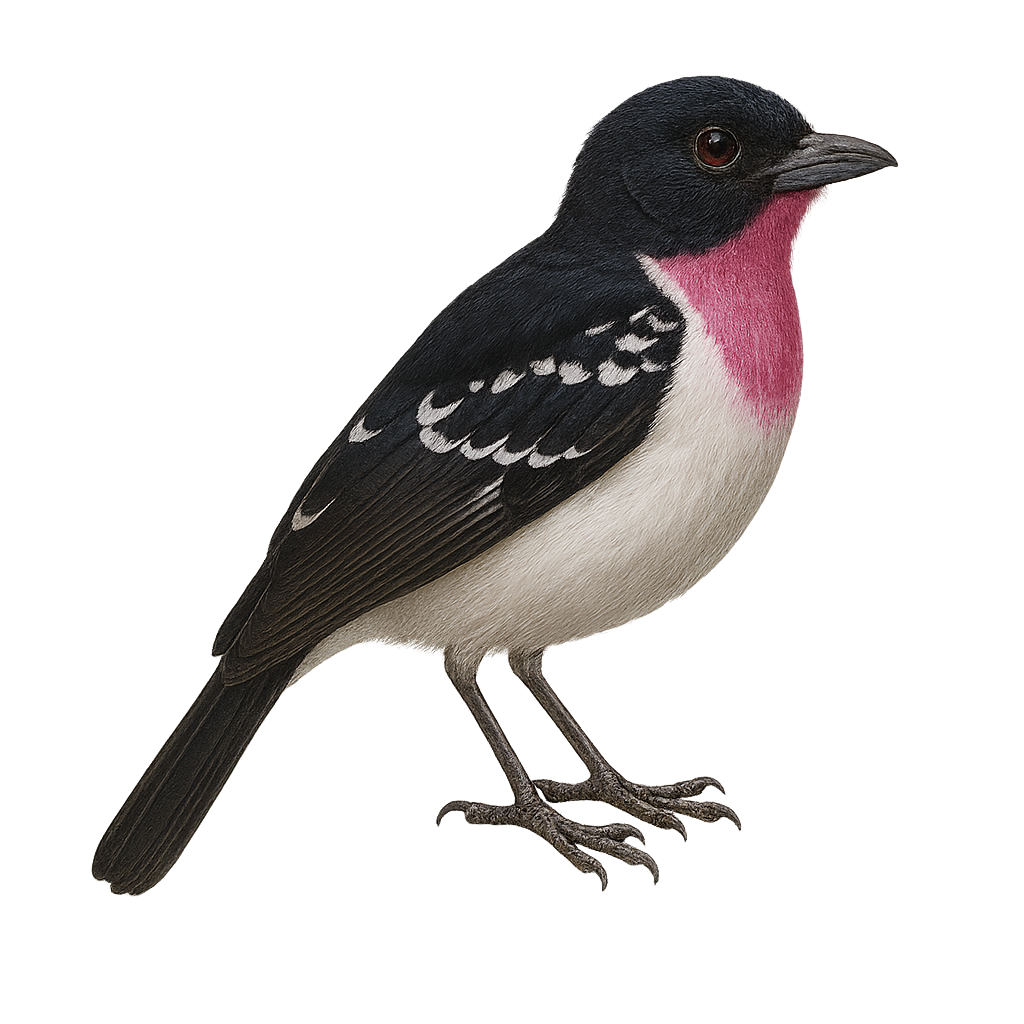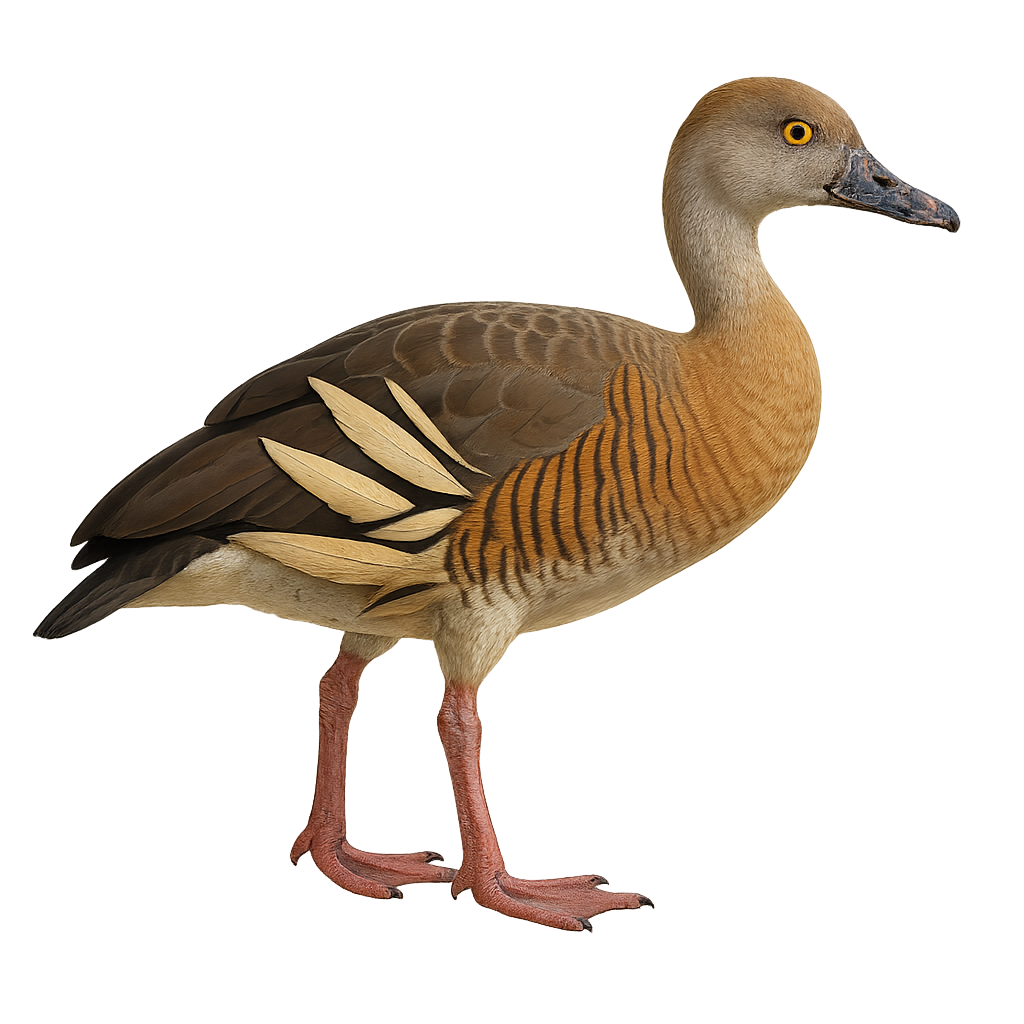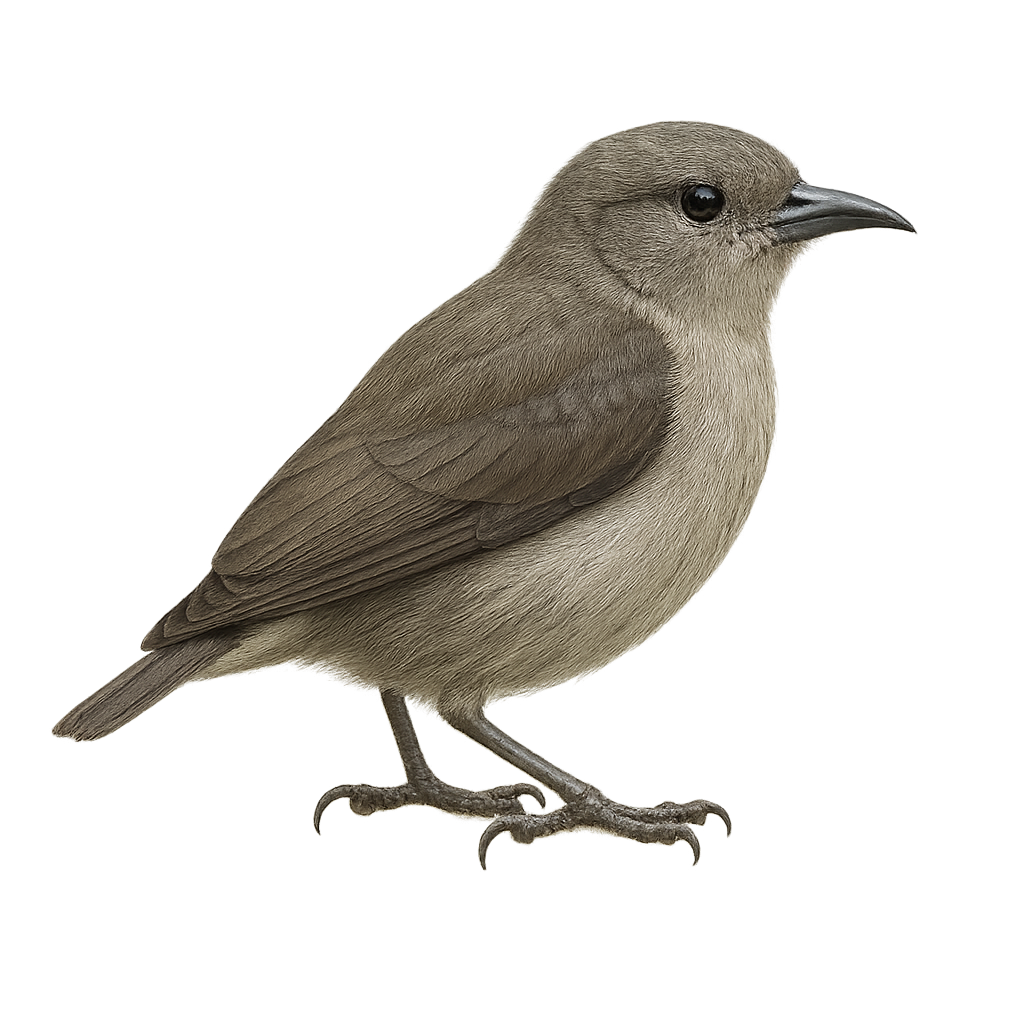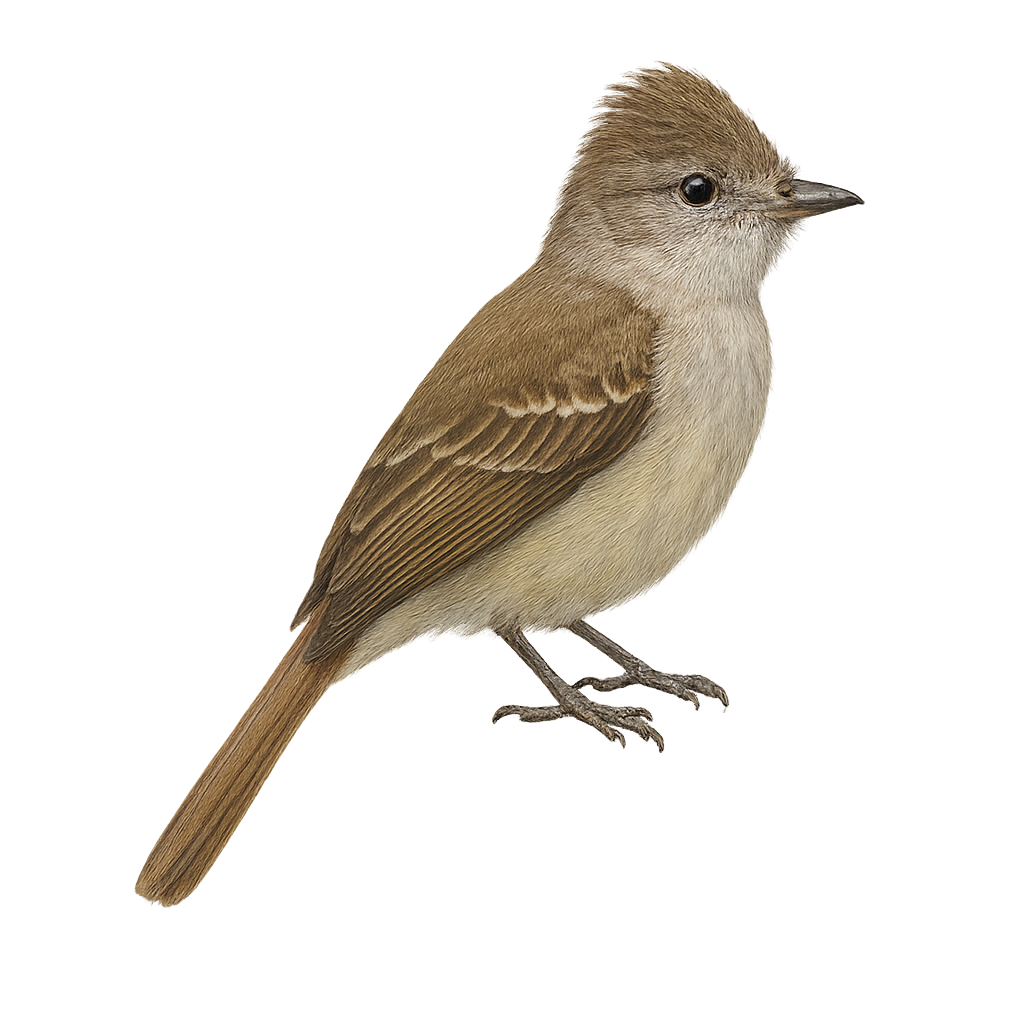The Philippine eagle is one of the largest eagles in the world and the national emblem of the Philippines. This majestic raptor is recognizable by the plume crest on its head and its piercing gaze. It primarily lives in the tropical forests of the Philippine mountains, where it hunts primates, reptiles, and other small mammals. Due to massive deforestation and hunting, the Philippine eagle is now considered critically endangered. Its population has drastically declined in recent decades, and conservation efforts are underway to protect this unique species.
The Pacific Reef Heron, Egretta sacra, is an elegant and slender bird often seen along the coasts and coral reefs of Southeast Asia and Oceania. It exhibits two plumage morphs: one entirely white and the other slate gray. This species is particularly adapted to coastal life, feeding mainly on fish, crustaceans, and aquatic insects. It is often seen alone or in small groups, patrolling the shores in search of food. The Pacific Reef Heron is known for its unique hunting technique, using its wings to create shade and attract prey. Although its habitat is threatened by coastal development, it is currently listed as of least concern by the IUCN.
The Pileated Finch, or Coryphospingus pileatus, is a small bird with distinctive plumage, primarily bright red on the head and body, with shades of gray on the wings and tail. It is often observed in wooded regions and savannas of South America, notably in Brazil, Bolivia, and Paraguay. This passerine is known for its melodious song and its ability to adapt to various habitats, although it prefers open areas with bushes and sparse trees. It primarily feeds on seeds and insects, which it finds by foraging on the ground or exploring low vegetation. The Pileated Finch is a sociable bird, often seen in small groups or pairs, especially during the breeding season.
The Pied Avocet is a graceful bird, easily recognizable by its long, upturned bill and striking black-and-white plumage. This bird inhabits wetlands, lagoons, and estuaries in Europe, Asia, and North Africa. The Avocet primarily feeds on small aquatic invertebrates, which it catches by sweeping its bill characteristicly through the water. Its flight is light and elegant, and it often moves in small groups, creating scenes of great beauty.
During the breeding season, the Pied Avocet exhibits courtship behaviors where males display their plumage and perform graceful movements to attract females.
The Pygmy Batis (Batis perkeo) is a small insectivorous bird from the Platysteiridae family, primarily found in the arid and semi-arid regions of East Africa. It is characterized by its striking black and white plumage, with a distinctive black band across its chest. Males and females look similar, although females often have browner tones. This bird is known for its active and agile behavior, often seen hopping from branch to branch in search of insects. It prefers habitats such as dry savannas, thornbushes, and sparse woodlands. Although relatively understudied, the Pygmy Batis is considered a species of least concern by the IUCN due to its wide distribution and stable population.
The Purple Sandpiper is a small wader distinguished by its plumage, which features shades of gray, brown, and purple, especially visible during the breeding season. This small bird primarily inhabits the Arctic coasts of Europe and North America, feeding on small marine invertebrates, mainly crustaceans and mollusks, which it finds in the mud and sand of beaches. The Purple Sandpiper is a long-distance migrant, covering vast distances between its breeding grounds in the Arctic regions and its wintering areas in more temperate zones.
The social behavior of the Purple Sandpiper is also noteworthy, often seen in large groups during migration. While this species is still relatively abundant, it can be affected by disturbance to its coastal habitats and climate change.
The Point-tailed Palmcreeper is a rare and fascinating bird, endemic to the palm forests of the Amazon. With its olive-brown plumage and distinctive pointed tail, it blends seamlessly into its habitat. This bird is often seen climbing along palm trunks, searching for insects and small invertebrates. Its ability to move skillfully among the fronds allows it to feed efficiently while staying hidden from predators. Although primarily solitary, it can occasionally be seen in small family groups. Its discretion and specific habitat make observing it a real challenge for amateur and professional ornithologists alike.
The Pallid Harrier (Circus macrourus) is a slender, medium-sized raptor (40–48 cm long, 95–115 cm wingspan), with slate-grey breeding plumage in males and mottled brown in females. It occupies open landscapes such as steppes, marshes and wet grasslands, gliding low over the ground to hunt micro-mammals, small birds and large insects. Nestling on the ground from May 1 to July 31, it builds a simple scrape nest hidden under vegetation. A long-distance migrant, it winters from the Sahel to the Indian subcontinent. Populations are vulnerable to steppe loss and agricultural disturbance, although recent trends are relatively stable. As a passage migrant in western Europe, it is eagerly sought by birdwatchers during spring and autumn migrations.
A nocturnal and secretive marsh heron, this bulky bird with cryptic buff-brown plumage hides among reeds to feed on insects, fish and small vertebrates from ambush. When moving, it crouches with neck erect and emits deep booms at dusk during the breeding season.
The Pale-billed Hornbill, Lophoceros pallidirostris, is a medium-sized bird belonging to the Bucerotidae family. It is primarily found in the savannas and open forests of southern Africa. Its plumage is mostly gray with shades of white and black, and its distinctive pale bill gives it its name. This bird is known for its social behavior, often seen in small groups. It primarily feeds on insects, fruits, and occasionally small vertebrates. The Pale-billed Hornbill plays an important role in seed dispersal, contributing to forest regeneration. Although it is not currently threatened, deforestation and habitat loss could pose long-term risks to its populations.
The Plain-pouched Hornbill, or Rhyticeros subruficollis, is a large and rare hornbill found in the tropical forests of Southeast Asia, mainly in southern Myanmar and the Malay Peninsula. It is recognized by its black body, pale orange-beige throat and chest, and large ivory bill topped with a rounded black casque. Males show a more intensely colored throat than females. This species inhabits lowland rainforests, especially near river valleys, and feeds on fruits, insects, and small vertebrates. Due to habitat destruction, the Plain-pouched Hornbill is classified as Endangered.
The Plain-colored Tanager is a medium-sized bird, measuring about 14 cm in length. It is characterized by its understated plumage, primarily gray with lighter shades on the belly and slightly darker wings. This species is found in the humid tropical forests of Central and South America, particularly in Panama and Colombia. It feeds mainly on fruits, insects, and nectar, playing an important role in seed dispersal. The Plain-colored Tanager is often seen in small groups, sometimes in the company of other bird species. Although its plumage is not as vibrant as other tanagers, it possesses a subtle elegance that attracts birdwatchers.
The Pacific Black Duck, or Anas superciliosa, is a dabbling duck species found mainly in Australia, New Zealand, and some Pacific islands. It is easily recognizable by its dark brown plumage with lighter patterns and a distinctive eyebrow stripe. This duck is often seen in wetlands, lakes, and rivers, where it primarily feeds on aquatic plants, insects, and small invertebrates. Although generally not very shy, it can become wary in areas where it is hunted. The Pacific Black Duck is an excellent swimmer and diver, using these skills to evade predators and forage for food.
The Patagonian Steamer Duck, Tachyeres patachonicus, is a flightless waterbird native to the southern coasts of South America, particularly Patagonia. It is easily identified by its greyish plumage and reduced wings, which it uses to paddle swiftly across the water. Often seen in small groups, this duck feeds on mollusks and crustaceans found in shallow waters. While generally discreet, it can become territorial during the breeding season. Males and females look alike, though males are slightly larger.
The Pied Imperial Pigeon, Ducula bicolor, is a large pigeon species known for its striking white plumage contrasted by black wings and tail. It is primarily found in the tropical forests and mangroves of Southeast Asia, including Indonesia, Malaysia, and the Philippines. This pigeon is an excellent flyer, capable of covering long distances to feed on fruits, its main food source. It plays a crucial role in seed dispersal, aiding forest regeneration. Although generally solitary, it can be seen in small groups during the breeding season. Its ability to adapt to various habitats, including urban areas, demonstrates its resilience. However, deforestation and hunting pose threats to some local populations.
The Paramo Seedeater is a small seed-eating bird found primarily in the mountainous regions of South America. It is characterized by its uniformly brown-grey plumage, which allows it to blend into its environment. Its modest size and conical beak are well-suited to its diet of seeds. It frequents high-altitude grasslands and open shrublands, often seen in small flocks. Although discreet, its melodious song is a clear indicator of its presence. The species is well adapted to the harsh climatic conditions of the paramos, unique ecosystems located above the tree line.
The Pearl-spotted Owlet, or Glaucidium perlatum, is a small nocturnal bird of prey belonging to the Strigidae family. It is easily recognizable by its white spots on the back and piercing yellow eyes. Measuring about 20 cm in length, it weighs between 60 and 80 grams. It primarily inhabits savannas and open forests in sub-Saharan Africa. Although mainly nocturnal, it can be active at dusk. Its diet consists mainly of insects, small mammals, and birds. It is known for its distinctive call, often heard at dusk and dawn. This species is relatively tolerant of human presence, making it easier to observe than other nocturnal raptors.
The Pel's Fishing Owl is a nocturnal bird of prey belonging to the Strigidae family, predominantly found in sub-Saharan Africa. It is distinguished by its rufous-brown plumage, piercing yellow eyes, and large size, reaching up to 63 cm in height. This owl is particularly adapted to fishing, with powerful talons and unfeathered legs, perfect for catching fish. It prefers habitats near water bodies, such as riparian forests and swamps. Its distinctive call, a deep "hoo-hoo," often echoes at dusk. Though elusive, it serves as an important indicator of the health of aquatic ecosystems.
The Purple-backed Thornbill, scientifically known as Ramphomicron microrhynchum, is a captivating bird belonging to the Trochilidae family. This hummingbird is noted for its vibrant plumage and agile flight behaviors. It is primarily found in the humid forests and mountainous regions of the Andes, where it feeds on nectar and insects. Its short bill is particularly adapted to accessing tubular flowers. Despite its small size, it plays a crucial role in the pollination of local plants. Its ability to fly backward and hover is remarkable. The Purple-backed Thornbill is a perfect example of evolutionary adaptation to specific environments, illustrating the diversity and beauty of South American avian fauna.
The Purple-throated Carib, or Eulampis jugularis, is a captivating bird native to the Caribbean, especially found on the islands of Dominica and Martinique. This hummingbird is noted for its striking plumage, with an iridescent purple throat that gives it its name. Males are generally larger than females and display more vibrant colors. They primarily feed on nectar but also consume small insects to supplement their diet. The Purple-throated Carib is a vital pollinator, playing a crucial role in the ecosystem by aiding the reproduction of many plants. It is often seen in tropical rainforests, gardens, and wooded areas, where it flies with agility and speed.
The Pin-tailed Green Pigeon, or Treron apicauda, is a medium-sized bird belonging to the Columbidae family. It is characterized by its vibrant green plumage, pointed tail, and shades of yellow and grey on its wings. This bird is primarily arboreal and feeds on fruits, especially figs. It is found in the tropical and subtropical forests of Southeast Asia, including India, Bangladesh, Thailand, and Vietnam. Often seen in small flocks, it moves from tree to tree in search of food. Although its habitat is threatened by deforestation, it is currently classified as "least concern" by the IUCN.
The Pink-necked Green Pigeon, scientifically known as Treron vernans, is a vibrant and fascinating bird native to Southeast Asia. This pigeon is notable for its colorful plumage, with males displaying a distinctive pink chest and shades of green and yellow across the body. Females are more subdued in color, predominantly green. These birds favor forested habitats and urban areas with dense vegetation. They primarily feed on fruits and play a crucial role in seed dispersal. Their flight is swift and direct, often in small flocks. Although generally not very shy, they can be cautious when threatened.
The Purple-throated Fruitcrow is a fascinating bird found in the tropical forests of Central and South America. It is distinguished by its glossy black plumage and striking purple throat, giving it a majestic appearance. This bird measures about 28 cm in length and primarily feeds on fruits, but it can also consume insects. The Purple-throated Fruitcrow lives in family groups and is often seen performing acrobatic flights through the canopy. It plays an important role in seed dispersal, aiding in forest regeneration. Although its habitat is threatened by deforestation, it is currently classified as Least Concern by the IUCN.
The Pied Crow, Corvus albus, is a medium-sized bird easily recognized by its distinctive black and white plumage. Its head, wings, and tail are black, while its neck and chest are bright white. This striking contrast makes it unique among corvids. It is widespread in sub-Saharan Africa, adapting to various habitats, from savannas to urban areas. An opportunist, it feeds on a variety of foods, from insects to human waste. Its intelligence and problem-solving abilities are remarkable, typical characteristics of crows. Sociable, it often forms noisy groups, communicating through a series of harsh calls.
The Pelagic Cormorant, Urile pelagicus, is a medium-sized seabird known for its glossy black plumage with green and purple sheens. It has a long neck and a slender, hooked bill, perfect for catching fish. This bird is commonly found along the rocky coasts of the North Pacific, from Alaska to California. It nests on steep cliffs, often in colonies, and feeds mainly on fish and small marine invertebrates. Although generally solitary outside the breeding season, it can be seen in small groups while hunting. Its flight is fast and direct, with regular wing beats.
The Philippine Hanging Parrot, or Loriculus philippensis, is a small, vibrantly colored parrot endemic to the Philippines. Measuring about 14 cm in length, it is characterized by its bright green plumage, a red patch on the forehead, and a short tail. Males and females are similar, although males often have brighter colors. These birds primarily inhabit tropical rainforests but can also be found in plantations and gardens. They are known for their acrobatic behavior, often hanging upside down to feed on fruits, flowers, and nectar. Their song is a mix of whistles and chirps.
The Porphyrolaema porphyrolaema is a fascinating bird belonging to the Cotingidae family. It is distinguished by its glossy black plumage and striking purple throat, giving it a majestic appearance. This bird is primarily found in the humid tropical forests of South America, where it feeds mainly on fruits and insects. It is often seen in small groups, making it easier to spot. Although its behavior is generally suspicious, it can be tolerant of discreet observers. Its breeding period is still poorly understood, but protecting its habitat is essential for its survival.
The Plumed Whistling Duck is a medium-sized waterfowl, easily identified by its light brown plumage with darker feathers on the back and wings. It has a lighter head and neck, often with a pinkish hue, and a grey bill. Its legs are long and grey-blue. This duck is often seen in flocks, feeding on seeds and aquatic plants. It is primarily nocturnal, spending its days resting in shaded areas near water. Found mainly in Australia, it inhabits marshes, lakes, and rivers. Although generally tolerant of human presence, it can become wary if disturbed.
The Plain Flowerpecker, scientifically known as Dicaeum concolor, is a small passerine bird belonging to the Dicaeidae family. It is primarily found in the tropical and subtropical regions of South and Southeast Asia, including India, Sri Lanka, Thailand, and Malaysia. This bird measures about 9 to 10 cm in length and is characterized by its modest plumage, usually gray-olive, which allows it to blend into its surroundings. The Plain Flowerpecker feeds mainly on small fruits, nectar, and insects, playing a crucial role in pollination and seed dispersal. It is often seen in small groups or pairs, actively moving through the forest canopy and gardens.
The Pelzeln's Elaenia is a small passerine bird belonging to the Tyrannidae family. It is primarily found in the tropical and subtropical humid forests of South America, particularly in Brazil, Colombia, and Venezuela. This bird is characterized by its olive-green plumage on the back and lighter underparts, with a subtle crest on its head. It is often seen feeding on insects and fruits in the canopy. Although its song is discreet, it plays an important role in communication between individuals. The Pelzeln's Elaenia is not very shy, making it easier for birdwatchers to observe.


